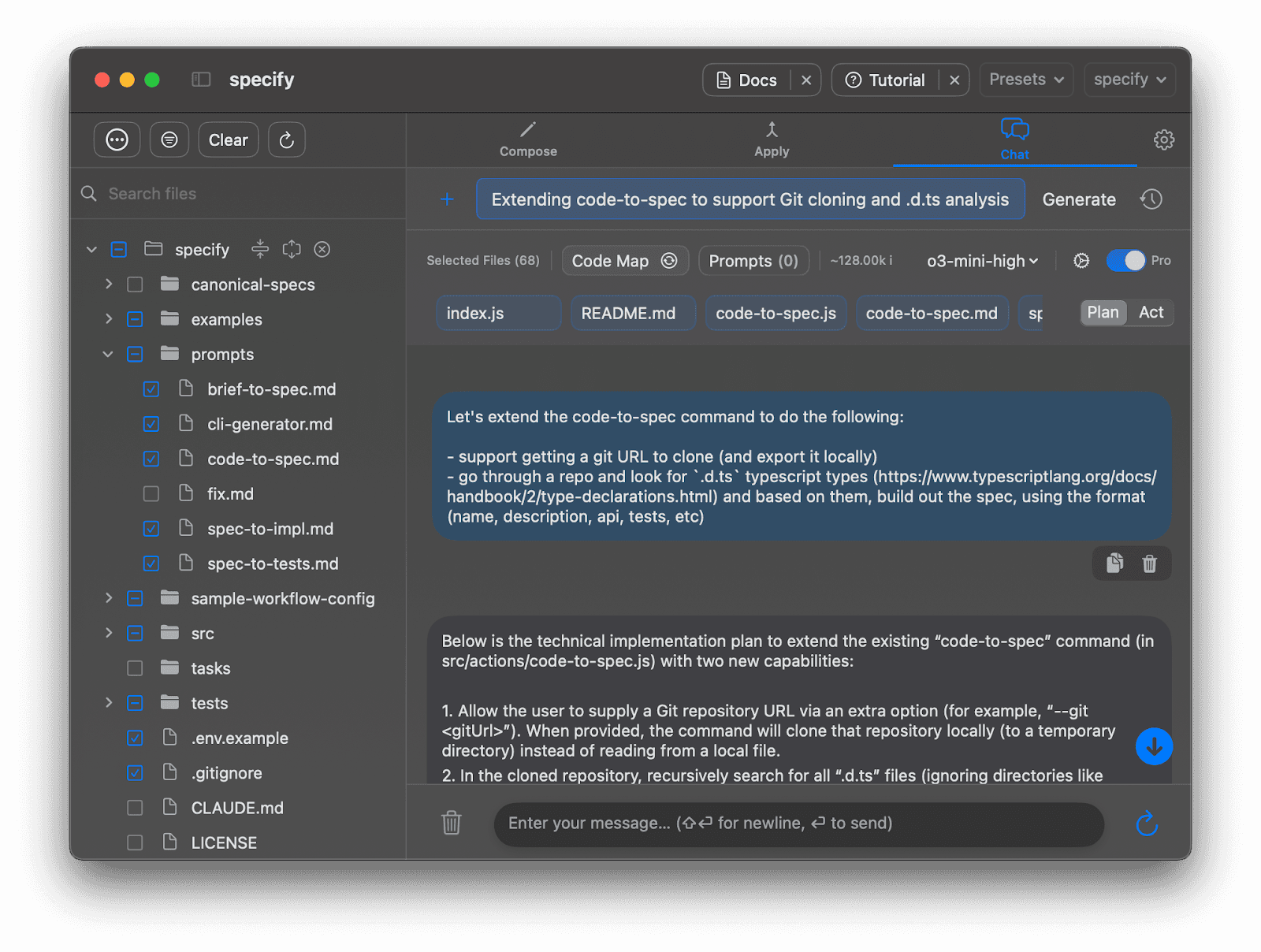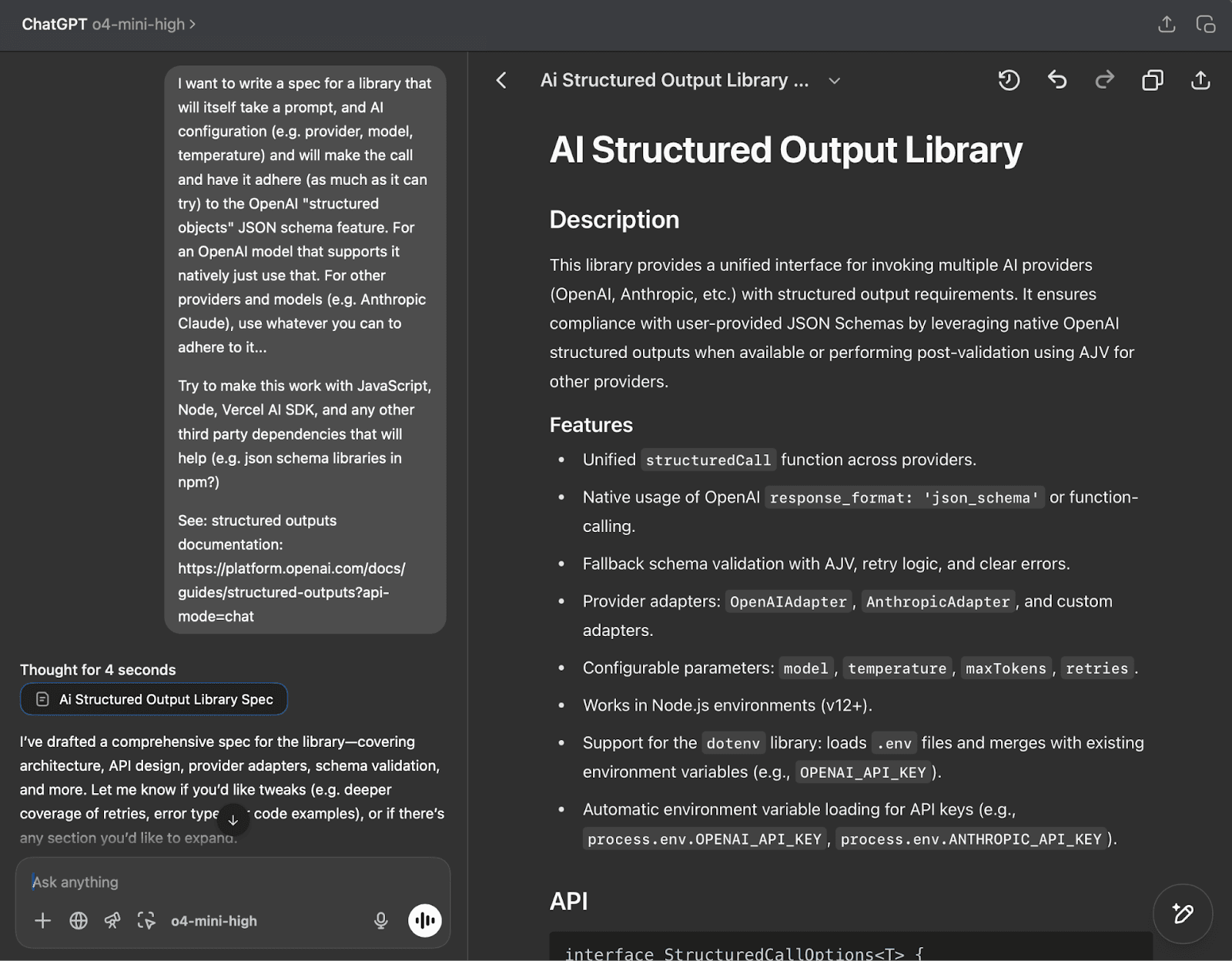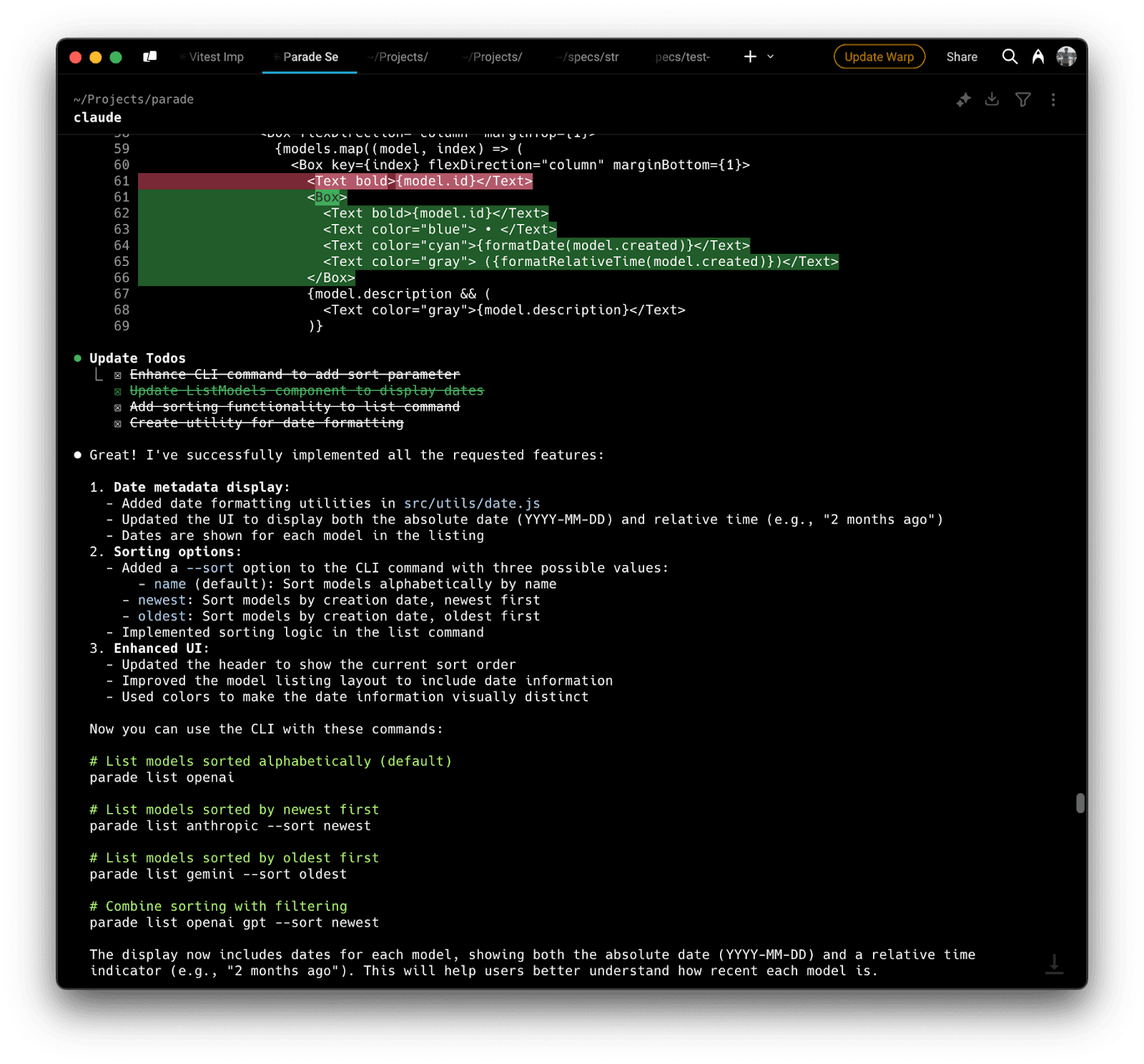
When Anthropic’s Claude Code was first announced alongside 3.7’s hybrid reasoning, I was genuinely surprised. It felt like opening up to a whole different style of development. We had been used to either going to ChatGPT or Claude to chat about code, or to open our IDEs to be — well integrated — with our codebase. With Claude Code we have something new, yet old… a terminal based solution that lets you chat and see code changes that you can accept or reject and refine.
How do you best use this new type of agentic coding?
Anthropic have kindly shared their Claude Code: Best practices for agentic coding, which is a fantastic resource for understanding how best to work with an LLM for generating code (much more practical and useful than OpenAI’s practical guide to building agents resource!).
Having used Claude Code and other tools for some time, I am finding workflows that work for me.
One of my common workflows right now goes like this:
First, I build a lightweight specification for the feature or capability that I am looking to work on in my codebase.
To do this, I will use various tools. One I really enjoy is RepoPrompt, a powerful desktop application that is fully repo-aware and allows you to refine and pick the exact context that you want available to your model.

I also enjoy using ChatGPT or Claude to generate a spec. ChatGPT has been iterating quickly on their artifacts pane, which allows you to build out a markdown spec and use chat to keep asking for changes, and manually edit the spec.

With spec in hand, I have done the thinking for the functionality and I’m ready to hand it over for implementation.
I fire up `claude`, and paste the spec in and iterate away.

Since you can fire up multiple instances of Claude, I will often have a series of specs, and before I take a break (lunch time!) I will fire off the specs on different git worktrees. My army of coding bots go to work and, after lunch, I can look through each, see each approach, and pick my favorite.
Enjoy being a TL and a PM for your new AI engineers!